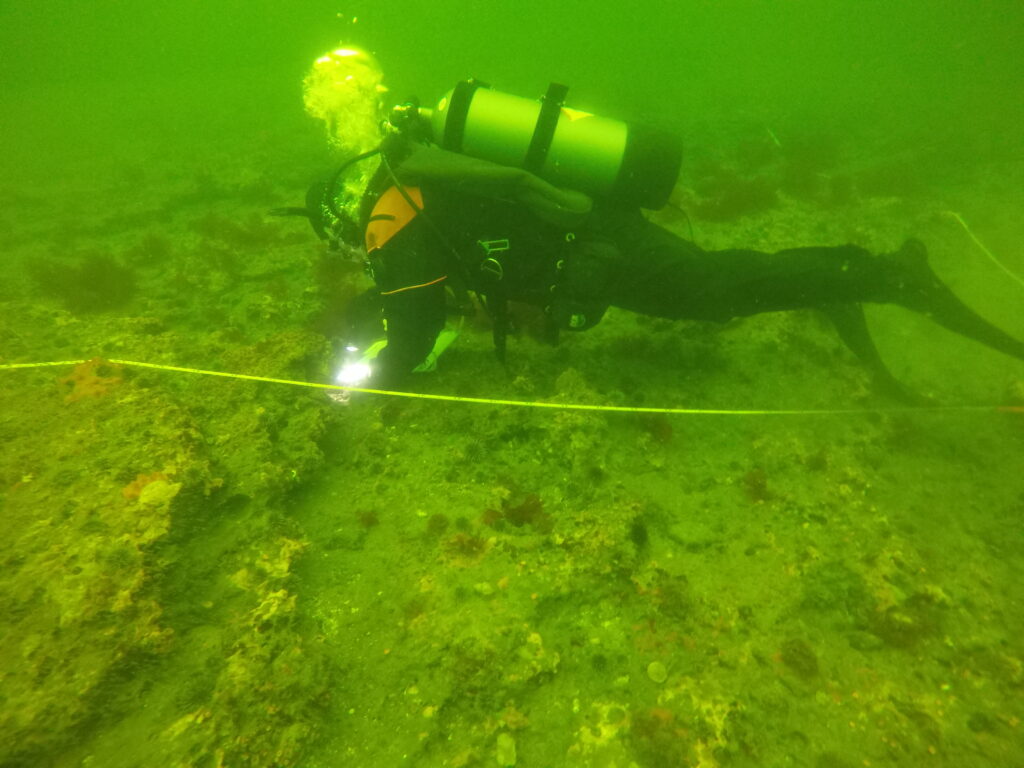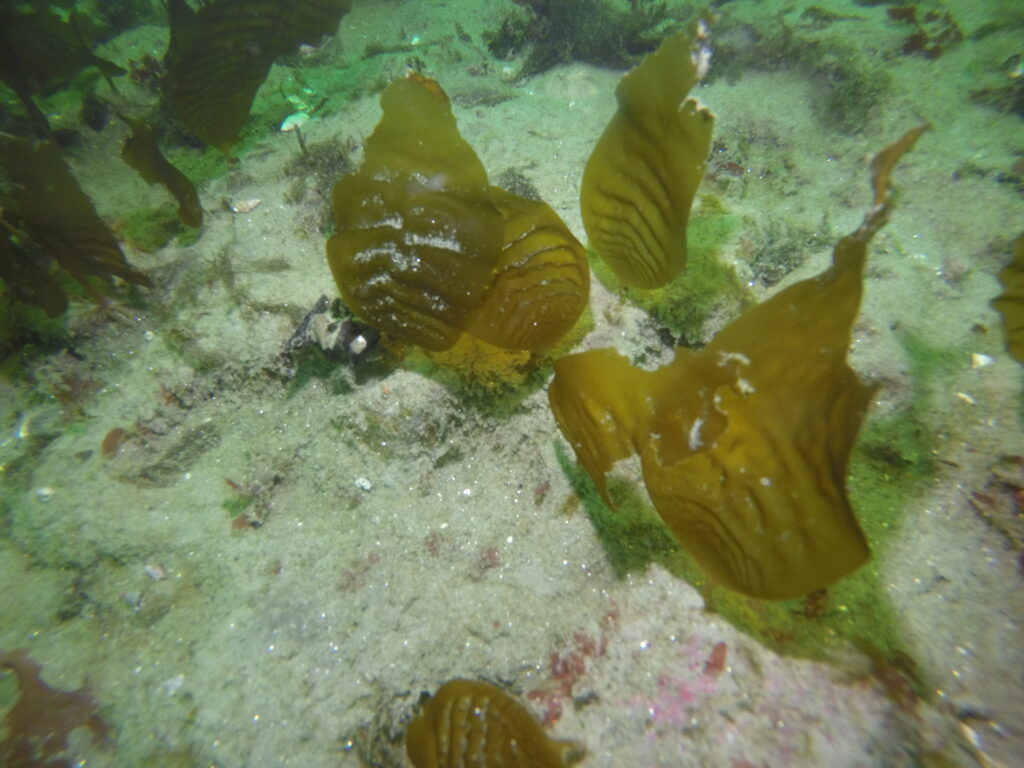On April 29, 2024, two research ecologists completed three survey dives at Tanker Reef, where ongoing research began in 2021. Using the California Dept. of Fish and Wildlife’s Research Vessel Mystinus, divers were able to complete three lanes (three 30×2 m transects per lane) at the Tanker Control site. This site is eastward of the culling “grid”, where red and purple urchins had been smashed by recreational divers with a valid sportfishing license from April 2021 until April 2024. In April 2024 the Fish and Game Commission allowed the temporary fishing regulation to sunset, as originally planned.
While the upper 15 ft of the water column was pea soup, the bottom had 15-20 ft visibility and no surge, and divers were able to size and count urchins and look for any signs of kelp settlement. Since surveys at this control site began in April 2021, it has been dominated by urchins, and no urchin culling took place here.

Although 99% of the site remains the same as it has been over the last three years (lots of urchins, very little kelp), there was a fair amount of acid weed Desmarestia showing up on transects, and at the end of lane 5, for about the last 5 m, we saw adult kelp and a carpet of new recruits and juveniles. See video here.
Urchins were very scarce in the area with giant kelp recruits, and per usual, when we find any kelp in the control transects, they are at the southern-most (i.e. shallowest) end of the lanes, closest to shore. It is unclear why urchin densities are lower here, since it is still 30 feet deep, and wave action displacing urchins is likely not an issue.

It remains unclear how many of these recruits will survive to adulthood, but adult giant kelp were observed in this same area, which indicates that some of the vulnerable recruits will survive to adulthood. To learn more about this project, read about it on SIMoN here.